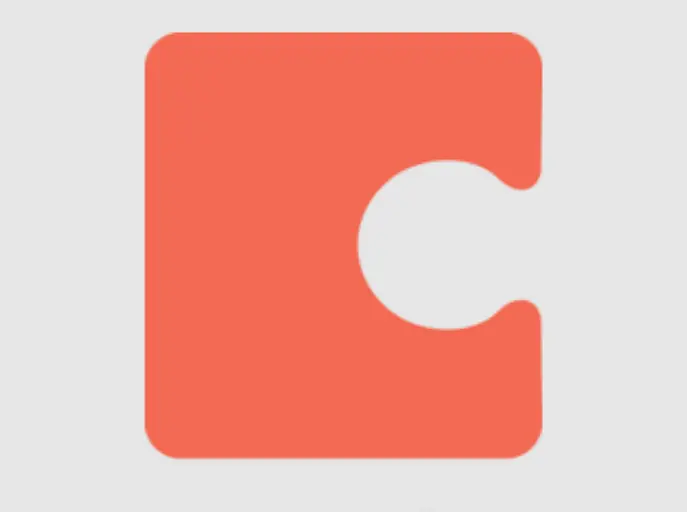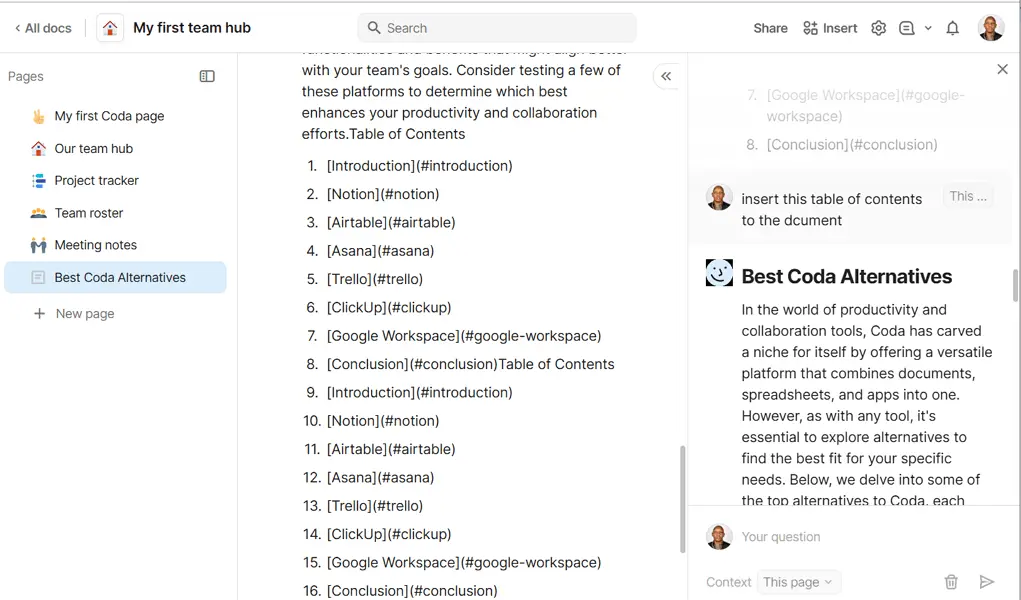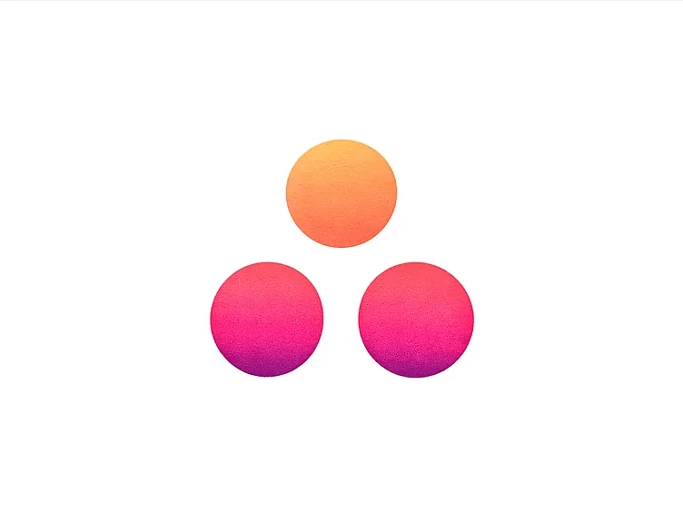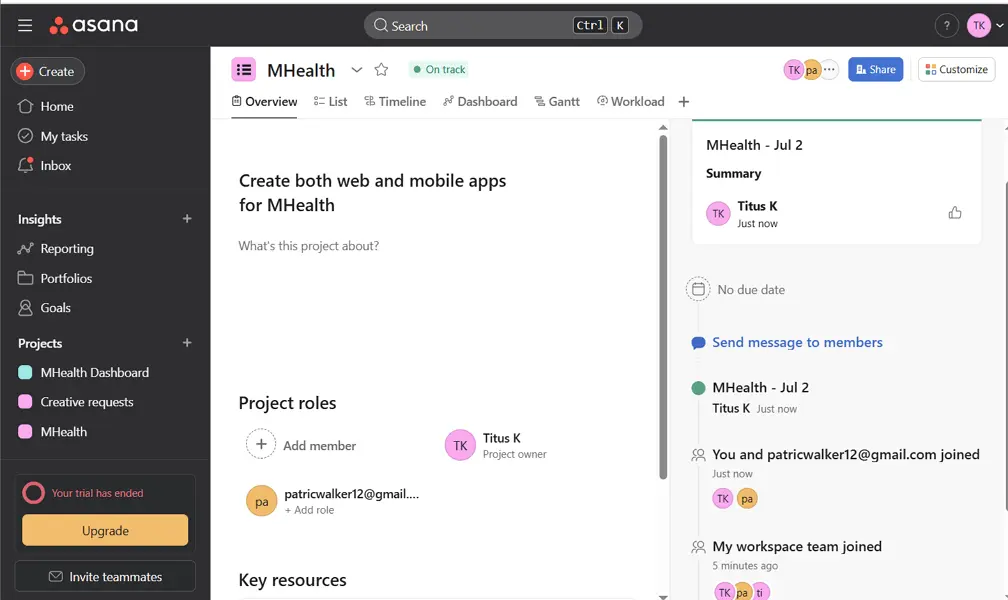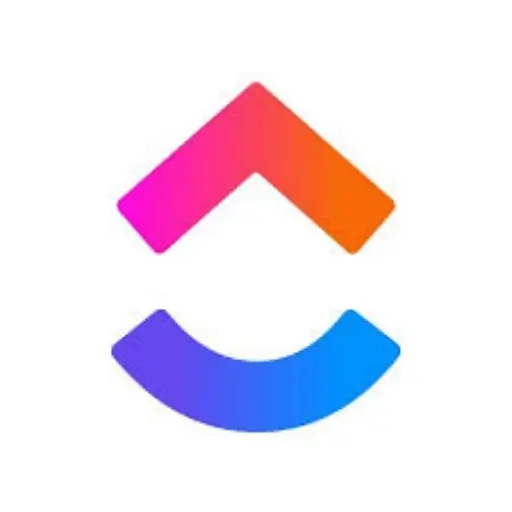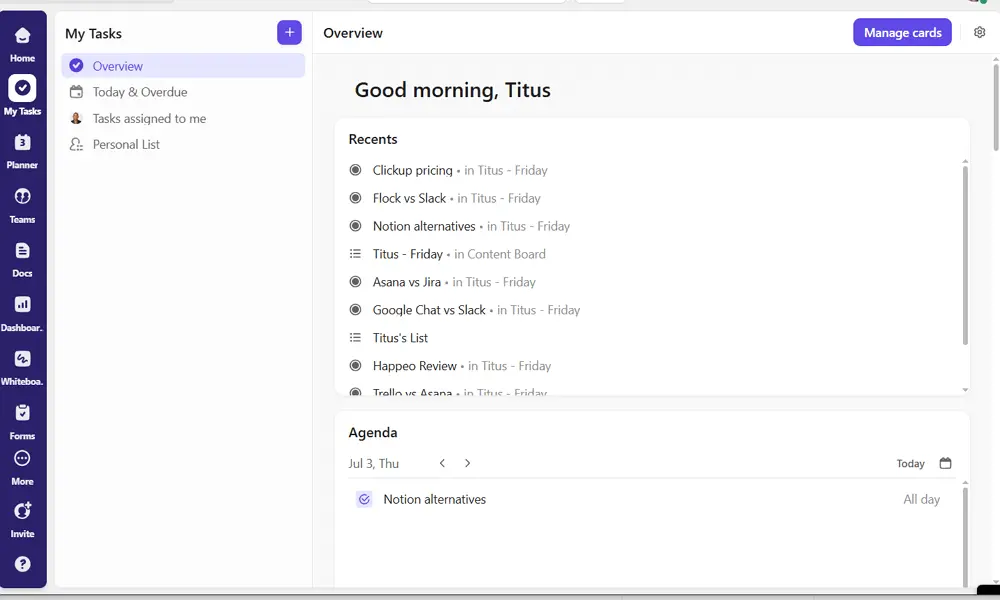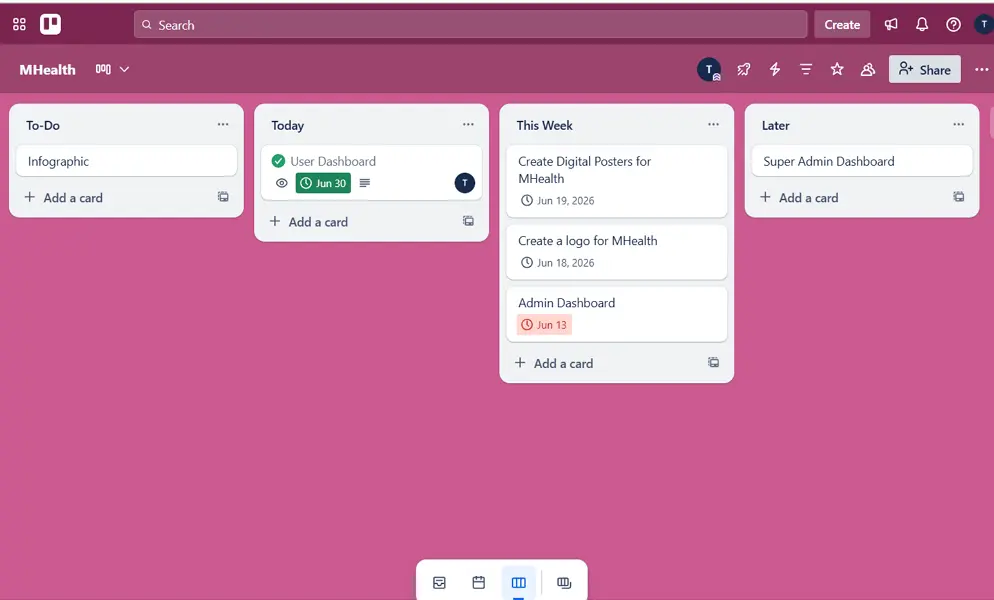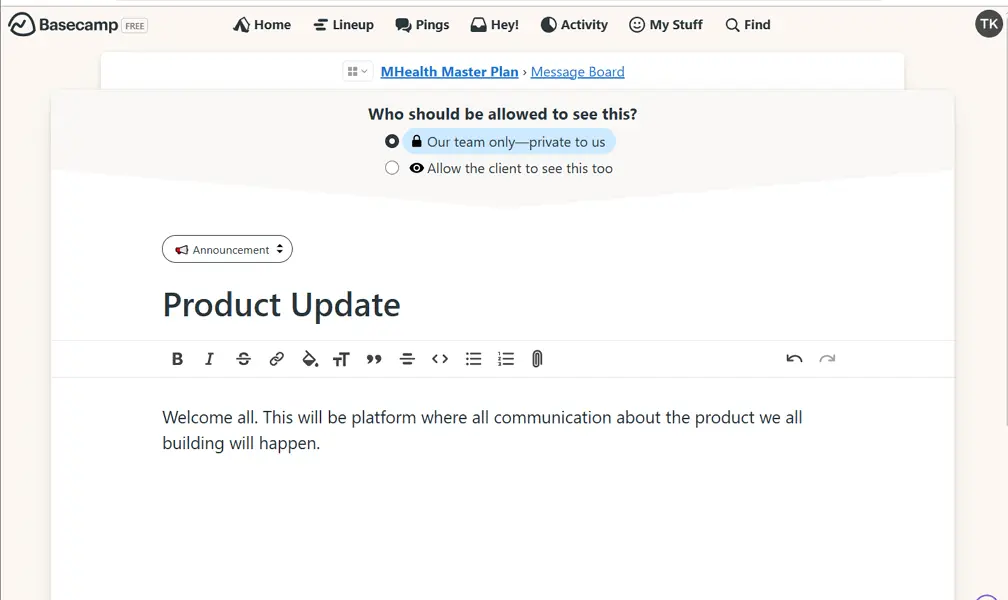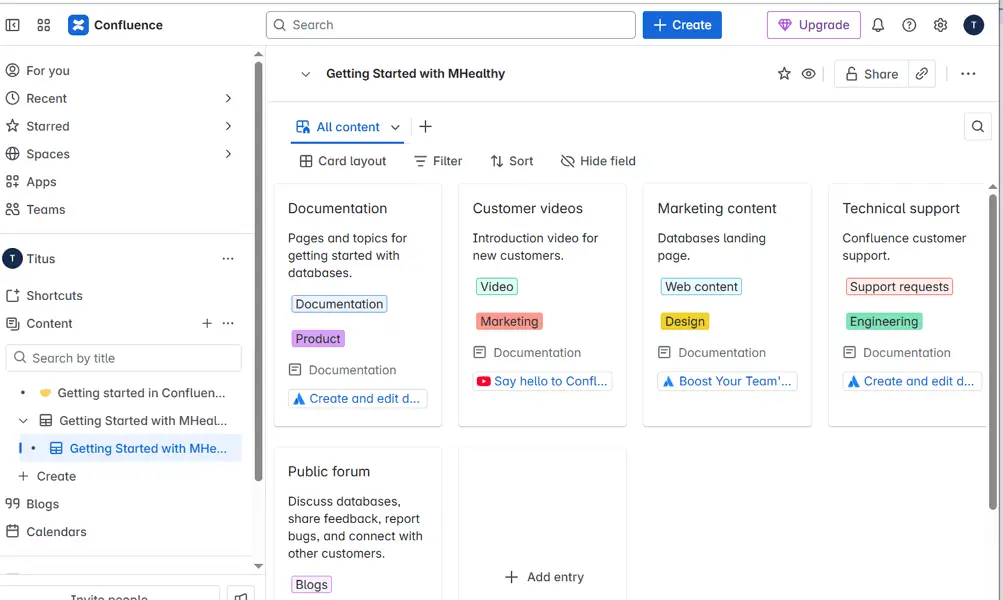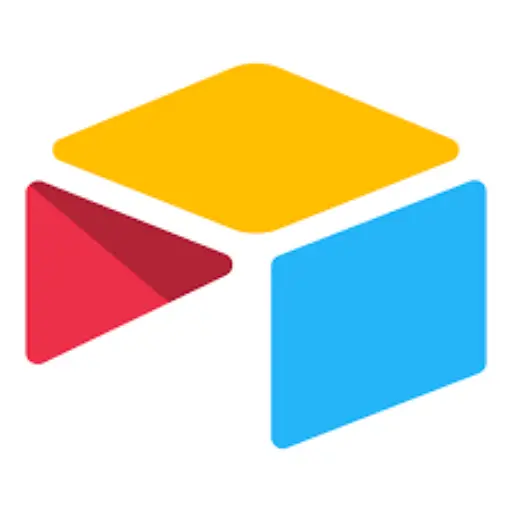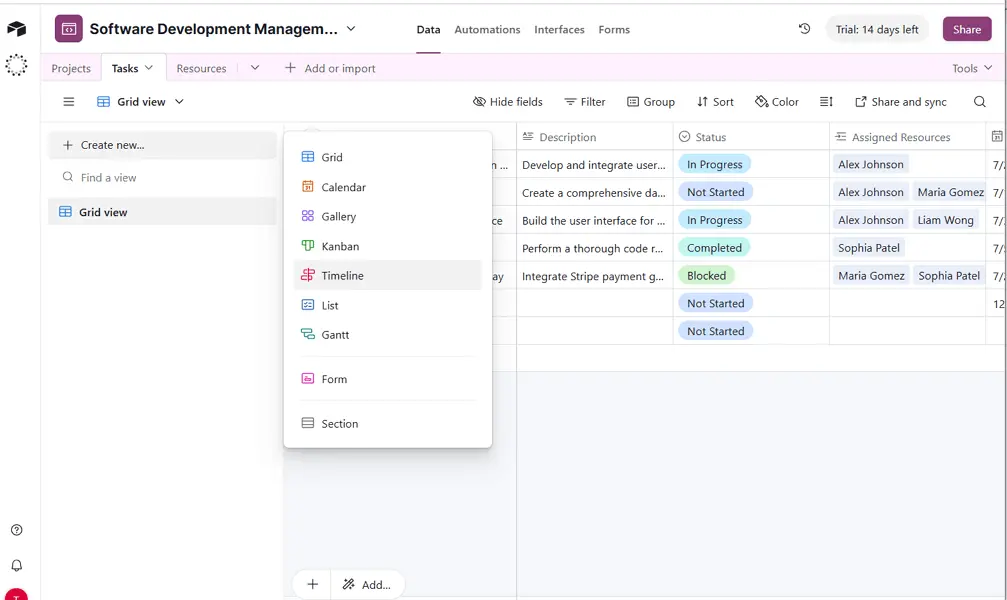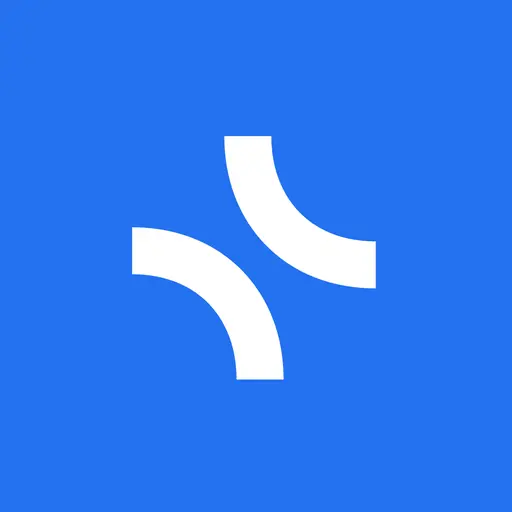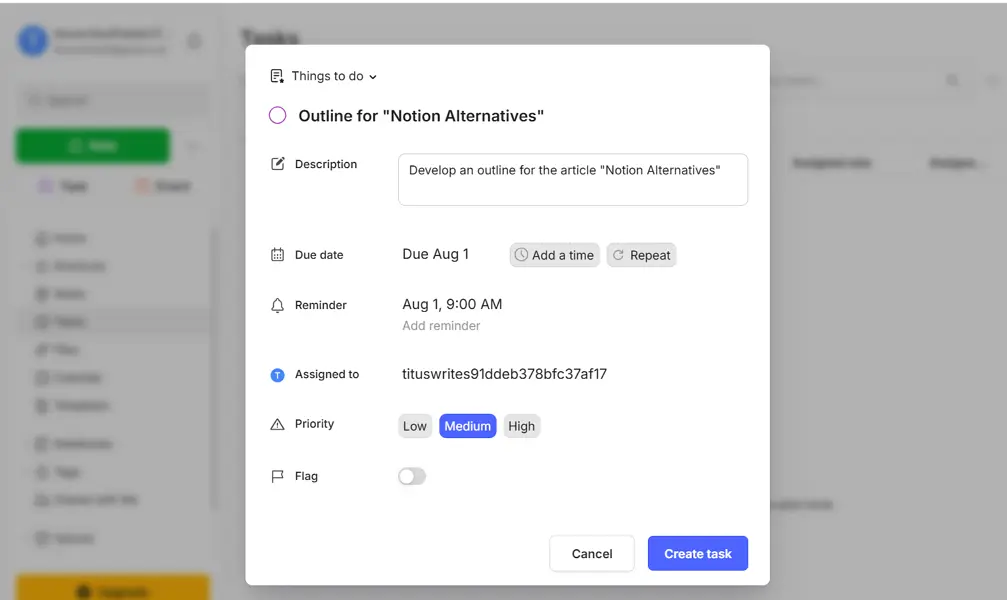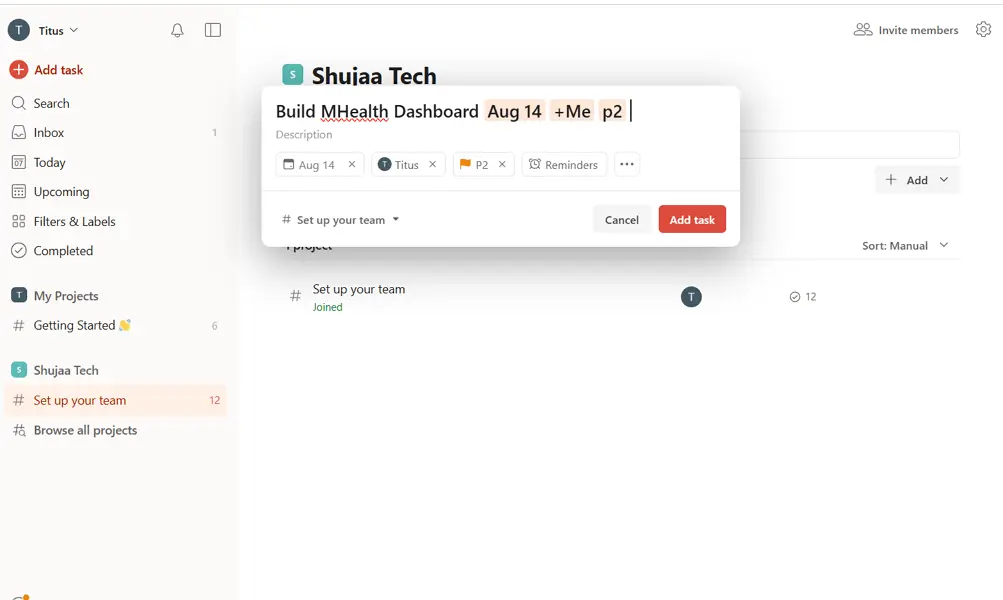Notion is one of the most popular productivity and workspace platforms available today. Individuals and teams now rely on it for everything from note-taking and task tracking to managing entire projects. However, Notion has a number of limitations. For example, it doesn’t have offline access. It also has a steep learning curve for new users. That is why many are actively searching for Notion alternatives that align with their workflows and preferences.
Also, Notion’s free plan has certain feature caps, and its real-time collaboration tools might not be as robust as some dedicated project management platforms. If you want a tool with a simpler interface, faster performance, or more advanced built-in features, you should consider looking at other options.
To help you out, I will walk you through the best Notion alternatives in this guide. Each offers unique advantages such as improved collaboration, better customization, enhanced offline functionality, and simplified user experiences. Whether you are a student, a remote team, or a solo entrepreneur, there is likely an alternative that is a better fit for your needs.
Key Takeaways: The Best Notion Alternatives
- Coda is the best free Notion alternative overall: Thanks to its AI features, and and ability to create pages that combine documents with automations. It’s an ideal Notion alternative for power users who want advanced AI capabilities in a single tool. Start your free Coda account today.
- Todoist is the Most affordable Notion alternative: Starting at just $4/month, Todoist is a great option for individuals who desire simplicity but still want the ability to manage tasks efficiently. While it doesn’t have the same features as more complex platforms, it often gets the work done. Get started with Todoist.
- Clickup Best free Notion alternative: ClickUp’s free plan supports multiple projects, kanban view, and integrations with other apps. With its robust databases and offline mode, it’s a great Notion alternative for teams that want more features without making a significant investment. Try ClickUp for free.
Experts Pick: Coda Is the Best Notion Alternative
My biggest frustration with Notion has always been how quickly performance slows down when working with large databases or complex pages. But with Coda, I can work with large tables, live data, and interactive elements without the lag. All these features are available on the free plan.
Coda is different from Notion. Where Notion feels like a blank canvas that needs a lot of setup, Coda gives me a ready-to-use workspace with smart building blocks like buttons, automations, and AI. I especially love how the AI can analyze and summarize table data within the doc itself. It’s like having a built-in assistant that understands my workflow.
Top 10 Notion Alternatives: Based on Our Rigorous Testing
If Notion is not ticking all the boxes for you, worry not, because you are not alone. After testing dozens of tools across different use cases like note-taking, team collaboration, and project management, I have narrowed it down to the 10 best Notion alternatives worth your time.
Whether you are looking for speed, offline capabilities, affordability, or niche-specific features, I’ve got you covered.
Pros:
- Smart AI tools built directly into your docs
- Supports powerful automations
- Combines databases and documents into a unified workspace
Cons
- May feel complex for beginners
Coda is an all-in-one collaborative workspace and a perfect alternative to Notion for users looking for a tool that offers more than just documents. The built-in form view allows you to collect data or run surveys from respondents without relying on an external app. Meanwhile, doing the same on Notion will require an integration.
Coda’s built-in AI assistant goes beyond helping users with summarizing and writing. This AI interacts directly with your tables and content, and you can ask it to generate content, analyze data, or summarize project status, all within the doc. It’s like having an analyst, writer, and assistant embedded into every page.
Other Things I Like About Coda
- Cross-doc Syncing: Coda makes it easy to sync data across multiple docs, meaning updates in one place reflect everywhere automatically. This makes it great for large teams and distributed systems.
- Extensive Template Gallery: Coda offers pre-built templates for OKRs, meeting notes, product roadmaps, and more. They are useful for jumpstarting team workflows.
- Comes With Interactive Buttons: Add clickable buttons to trigger tasks like creating new rows, sending messages, or running calculations. It transforms static pages into mini-apps.
Coda offers a generous free plan with core features like collaborative docs and Kanban boards. For more advanced tools, like increased automation runs and premium packs, pricing starts at $10/month. Want to supercharge your docs? Start your free Coda account to see what makes it one of the smartest Notion alternatives today.
Pros
- An easy-to-use interface for task tracking
- Powerful automation to streamline workflows
- Built-in workflow and timeline views
Cons
- Limited document creation features compared to Notion
Asana is a web-based project and task management tool designed to help teams organize, track, and manage their work efficiently. Asana shines as a Notion alternative for teams that prioritize execution over documentation. Unlike Notion, which requires users to build task workflows from scratch, Asana comes ready to go. You can start managing projects immediately, assign responsibilities, and track progress without the need for extra setup or custom databases.
Asana is also known for its visual clarity. With boards, lists, timelines, and calendars, you always know where tasks stand. You can switch between different views, like lists and boards, with a single click. Everything is organized and easy to navigate, even for first-time users. If you have found Notion’s flexibility overwhelming for structured projects, Asana offers a simpler, more focused experience.
Check out our detailed Asana pricing guide to discover all the features it offers.
Other Things I Like About Asana
- Workflow Automation: Automate repetitive actions, like task assignments or status changes, to save time and reduce manual work.
- Custom Fields: Add custom data points like priority or budget so your team can filter and sort tasks the way they need.
- Workload View: See what each team member is working on at a glance, so you can balance workloads and avoid burnout.
Asana offers a free plan for up to 10 users, with unlimited tasks, projects, and messages. Paid plans with advanced features like unlimited automations, Timeline, and Workload tracking start at $10.99/month per user. Want to take control of your team’s work? Start your free Asana account to see if it’s the right fit.
Pros
- Built-in docs, chat, goals, and dashboards
- Highly customizable workspace
- Generous free plan with advanced features
Cons
- Steep learning curve due to many features
ClickUp is a cloud-based project management and productivity tool that combines task tracking, management, collaboration, and document creation into one unified platform. It has a robust task management system where you can build detailed workflows using nested subtasks, custom statuses, dependencies, and priorities. ClickUp also supports multiple views, like List, Board, Gantt, Calendar, and Mind Map, allowing every team to work in their preferred style.
Another strong point that makes ClickUp a good alternative to Notion is its deep integration between features. For example, you can link tasks to docs, update goals from completed tasks, and chat with team members all without switching tabs. Where Notion offers flexibility, ClickUp adds structure, making it easier to scale projects and manage larger teams effectively. Read our full ClickUp review to learn more.
Other Things I Like About ClickUp
- Workflow Automation: ClickUp lets you automate repetitive actions like assigning tasks, updating statuses, or sending notifications. You can set triggers and conditions, saving your team time and minimizing human error.
- Advanced Reporting: Build real-time dashboards and reports to track productivity, workload, and project health. These reports are customizable and offer deep insights that help managers stay on top of deadlines and performance.
- Goal Tracking: You can set goals for your company, team, or yourself. Then, you can break them down into measurable goals that update automatically as tasks are completed. This makes it easy to track progress and keep team members focused.
ClickUp offers a generous Free Forever plan with unlimited tasks, users, and several project views. Paid plans, which include more automation and advanced reporting options, start at $7/month per user. Want to simplify your tool stack? Read our in-depth ClickUp pricing guide to explore all its features.
Pros
- The drag-and-drop interface makes it easy to use
- Seamless integration with third-party tools
- Highly visual layout with cards and boards
Cons
- Limited functionality for complex projects
Trello is a visual task management tool that helps individuals and teams organize projects using boards, lists, and cards. It is an ideal alternative for users seeking a visual, card-based system to manage tasks. It uses a Kanban-style interface where you can move tasks (cards) across lists to show progress. For teams that don’t need complex databases or document management, Trello is an intuitive and streamlined option.
I particularly love Trello for its simplicity. While Notion can become overwhelming with endless customization, Trello keeps things minimal. You can create boards for different projects, add checklists, due dates, attachments, and labels, all without configuring endless settings or templates. It is perfect for non-technical users or teams just getting started with project tracking.
Other Things I Like About Trello
- Butler Automation: Automate tasks like moving cards, assigning members, or sending reminders using Trello’s Butler tool without any coding.
- Power-Ups: Add advanced features and integrations through Trello Power-Ups, connecting tools like Slack, Google Drive, and Jira. This ensures you can continue using tools you are conversant with, reducing the need to learn new tools.
- Labels: Trello lets you color-code and name labels, making it easy to categorize tasks by priority, department, or status at a glance.
Trello’s Free plan includes unlimited cards and up to 10 boards per workspace, which is generous for small teams. Paid plans that include unlimited boards, advanced checklists, and custom fields start at just $5/month/user. Want a visual and intuitive way to manage your work? Start using Trello for free.
Pros
- Clean and easy-to-use interface
- Supports both internal and external collaborators
- Grouped notifications for easy follow-ups
Cons
- No native time-tracking feature on the free plan
Basecamp is a project management and internal communication tool where each project space includes a To-do list and a shared schedule that syncs with everyone’s calendar. Tasks can be assigned, tracked, and linked to deadlines without needing extra tools. This makes Basecamp ideal for teams that want a tightly organized workflow, especially when managing multiple deliverables at once.
Basecamp also shines with its team communication tools. The built-in message boards, group chat (Campfire), and automatic check-ins reduce the need for constant meetings or scattered email threads. Because everything is tied to specific projects, teams can keep all their updates, discussions, and documents in one place without the need to jump between platforms.
Other Things I Like About Basecamp
- Hill Charts: A unique visual tool that shows progress not just by status but by momentum. This is great for tracking how close a team is to solving the unknowns of a project.
- Client Access: You can invite external clients with restricted access, making Basecamp useful for agencies or freelancers managing deliverables.
- Automatic Check-ins: Instead of chasing team updates manually, Basecamp sends recurring prompts like “What did you work on today?” This streamlines team reporting without the need for face-to-face meetings.
Basecamp offers a free plan that supports just one project at a time. It is ideal for personal use and small teams. Paid plans start from $15/user/month. However, you can opt for the full version that costs a flat fee of $299/month, regardless of team size. Want a centralized platform that simplifies team collaboration? Start with Basecamp’s free plan.
Pros
- Works well for technical and non-technical documentation
- Strong version history for every page
- Supports both rich text and markdown formatting for flexibility in writing
Cons
- Limited offline access
Confluence is a team workspace tool built by Atlassian, designed for creating, organizing, and sharing internal documentation. It offers a structured hierarchy and powerful search, making it easy to scale documentation as your company grows. Spaces, pages, and child pages keep everything logically organized, while robust filters and tagging help you retrieve content instantly. This works perfectly even in large knowledge bases.
Another of Confluence’s standout features is its deep integration with Jira. Teams that rely on agile workflows can link Confluence pages directly to Jira tickets, create product requirement documents (PRDs), and keep technical and non-technical collaborators in sync. Notion doesn’t offer this level of native synergy with development pipelines as of this writing.
Other Things I Like About Confluence
- Collaborative Page Editor: Multiple team members can co-edit documents, leave inline comments, and resolve feedback in real-time. This makes it especially effective for drafting project specs, meeting notes, or company policies.
- Analytics: The built-in analytics show who viewed, changed, or commented on a page. This makes it easier to track engagement and accountability.
- Site and Page Permissions: Fine-tuned access settings let you decide who can view, comment, or edit each space or page. This is ideal for managing sensitive content.
Confluence offers a free plan for up to 10 users, which is inclusive of core features like pages and spaces. Paid plans, which unlocks advanced admin controls and analytics, start at $4.3/user/month when billed annually. Want a documentation-focused alternative to Notion? Start with Confluence’s free plan.
Pros
- A big library of templates
- Excellent for managing structured data like inventories
- Great for building a visually intuitive database
Cons
- Limited functionality on the free plan for larger teams
Airtable is a cloud-based platform that combines the simplicity of spreadsheets with the power of a database. The platform is known for its advanced database functionality. While Notion offers databases too, Airtable supports more complex relationships, linking across multiple tables, and powerful filtering options. It is ideal for teams managing CRM data, product catalogs, or editorial calendars where relational data is key.
Airtable also has customizable views. Users can switch between grid, calendar, Kanban, gallery, or Gantt views depending on how they prefer to visualize and manage information. This makes it highly adaptable for use cases ranging from project management to event planning.
Other Things I Like About Airtable
- Interface Designer: Airtable lets you design lightweight dashboards and internal tools without writing any code. These are perfect for client portals and reporting.
- Airtable Sync: This feature allows users to pull live data from internal bases or external sources. Airtable sync makes it easy to build centralized databases and speed up data location.
- Real-time collaboration and commenting: Users can tag teammates, leave notes, and track changes across shared bases. Teams can do all this while maintaining a clean, spreadsheet-like experience that is familiar to most. This makes it a solid choice for teams that work asynchronously.
Airtable offers a generous free plan with essential features like unlimited bases, interface designers, and up to five editors. Paid plans start at $20/user/month with advanced automation, syncing, and granular permissions. Want to explore a visual, flexible alternative to Notion? Try Airtable’s free plan.
Pros
- Minimalistic workspace that is easy to navigate
- Flexible use cases like note-taking, campaign planning, and journaling
- Viewers don’t have to create an account to access content
Cons
- Not ideal for teams with complex team permissions
xTiles is a visual note-taking and knowledge organization tool that combines the freedom of a digital whiteboard with the structure of traditional notes.
One of its standout features is its tile-based layout system. Unlike Notion’s block system, xTiles offers a drag-and-drop canvas where users can arrange notes, links, and to-do lists like sticky notes on a board. This setup is ideal for ideation, content planning, and project overviews where structure evolves.
Another strength is its emphasis on visual hierarchy and clarity. Users can nest tiles, group them by topic, and use headers, colors, and lines to organize thoughts. This makes xTiles a favorite for mind-mapping and managing complex information in a visually digestible way.
Other Things I Like About xTiles
- Real-time Collaboration: xTiles allows real-time editing, sharing via links, and page-level comments make it easy to co-create ideas with team members.
- Offline Accessibility: xTiles allows users to access it and edit documents even without an internet connection. However, you need to be connected to the internet for the data to sync across all your applications. This feature makes it ideal for distraction-free and travel environments.
- Web Clipper: xTiles has an extension that allows users to snap snippets, and articles from the internet directly into its tiles. This makes this app useful for research, and cross-referencing.
xTiles offers a free plan with 1 team space, 3 personal projects, and over 100 free templates. Paid plans start at $5.75/user/month, adding unlimited storage, premium templates, and recurring tasks. Want a visually intuitive and flexible Notion alternative? Try xTiles for free.
Pros
- Works across Android, iOS, Windows, and macOS to keep your devices connected
- Handwriting support for stylus users
- Offline support
Cons
- Free plan is limited to one device only
Evernote is a note-taking and information management tool. It is best known for its organization system through notebooks, tags, and stacks that offer impressive flexibility. Unlike Notion, where users build their own hierarchy from scratch, Evernote’s system feels familiar and requires minimal setup. It is ideal for users who want a reliable, low-maintenance way to manage large volumes of content.
Also, Evernote also has optical character recognition (OCR). This allows users to search for text inside scanned documents, PDFs, images, and handwritten notes. It is especially useful for researchers, students, and professionals who handle a lot of visual or scanned content.
Other Things I Like About Evernote
- Note Templates: Includes pre-made templates for meeting notes, weekly planners, and journaling. This saves on time as users are setting up documents.
- Tasks With Due Dates: Evernote supports basic task management, where you can set up due dates and reminders. This makes it useful for personal projects.
- Robust Web Clipper: With a single click, users can save full articles, simplified texts, images, or bookmarks directly into notebooks. This makes Evernote an excellent choice for people who gather online research or content regularly.
Evernote has a free plan where users can sync up to one device, includes one notebook, and supports up to 5o notes. Paid plans start at $10.83/month and unlock advanced features like integrations, AI search, and more connected devices. Try Evernote for free and experience what this note taking tool has to offer.
Pros
- Minimalistic design that reduces distractions
- Offers daily and weekly reports for planning
- Integrates with multiple apps to extend its functionality
Cons
- Limited controls or granular permissions
Todoist is a popular task management app built for individuals and teams who want to stay organized with minimal effort. It is known for its priority levels and productivity tracking. For instance, you can color-code tasks by urgency and use the “Karma” feature to track how consistent you are with task completion over time. For goal-oriented users who like visual feedback, this gamified system provides ongoing motivation and accountability.
Another standout feature is natural language processing (NLP). For instance, you can type something like “Submit a report every Friday at 3 p.m.,” and Todoist will auto-schedule it accordingly. This drastically cuts down on clicks and setup time, making the tool incredibly fast to use. It is a huge productivity booster, especially for users juggling dozens of tasks daily.
Other Things I Like About Todoist
- Collaboration Tools: Todoist allows users to create teams or invite collaborators and clients to work on a project. This makes it ideal for small teams working towards a common goal.
- Templates for Productivity: Comes with prebuilt project templates like “Meal Planning” or “Project Tracker” to get you started faster.
- Cross-Platform Support: Works flawlessly across web, mobile, desktop, and even smartwatches. This means users can keep working on tasks, no matter the device they use.
Todoist’s free plan offers task creation, priority levels, 3 filter views, and up to 5 active projects. For more advanced features, like reminders, filters, and file uploads, paid plans start at $4/month. Try Todoist for free to streamline your task management.
What Are the Downsides of Notion?
While Notion is a feature rich and powerful all-in-one workspace, it does have several limitations that may not suit every user or team.
- Basic Permissions for Teams: Notion’s collaboration features lack fine-grained permission controls. This can be a deal-breaker for larger or security-focused organizations.
- Slow Performance: Users complain that Notion can lag with large databases or complex pages.
- Limited Offline Access: Although some offline functionality exists, Notion often struggles to sync properly or allow full editing without a stable internet connection.
- Steep Learning Curve: Notion may not be the easiest workspace to use, especially for users seeking a simple structure.
- Limited Audit Log: The audit log feature is only available to Enterprise subscribers. This makes Notion unattractive to basic users who need detailed tracking and monitoring.
In Conclusion: What’s the Best Notion Alternative?
Choosing the best Notion alternative ultimately depends on how you prefer to organize your work, collaborate with others, and manage information. Whether you are looking to streamline task management, simplify documentation, or create more structured workflows, there is a tool on this list to meet your needs.
Coda earns a top spot for those who want advanced database functionality and integrated AI tools.
If Coda isn’t the right fit, ClickUp is a good fit for those looking for a powerful task management system, robust customization, and an all-in-one workspace approach. Meanwhile, Confluence stands out for documentation-heavy teams who need a dedicated space to create, organize, and share structured knowledge. It works best, especially when used alongside tools like Jira.
Have you tried any of these Notion alternatives? What worked for you and what didn’t? We would love to hear your thoughts in the comments.
If you are managing a remote or global team, choosing the right tool is only half the battle. Check out our guide on how to manage remote teams working across time zones for practical tips on improving collaboration and productivity regardless of where your team is located.
FAQs: Notion Alternatives
What’s better, Asana or Notion?
Asana is better structured for task management. Notion, on the other hand, offers more flexibility for note-taking and custom workflows.
Is Notion better than Evernote?
Notion is versatile. Evernote is good for quick note-taking and organizing handwritten or scanned content.
Which is better, Trello or Notion?
Trello is best suited for visual task tracking. Notion is best for content-rich workspaces.


